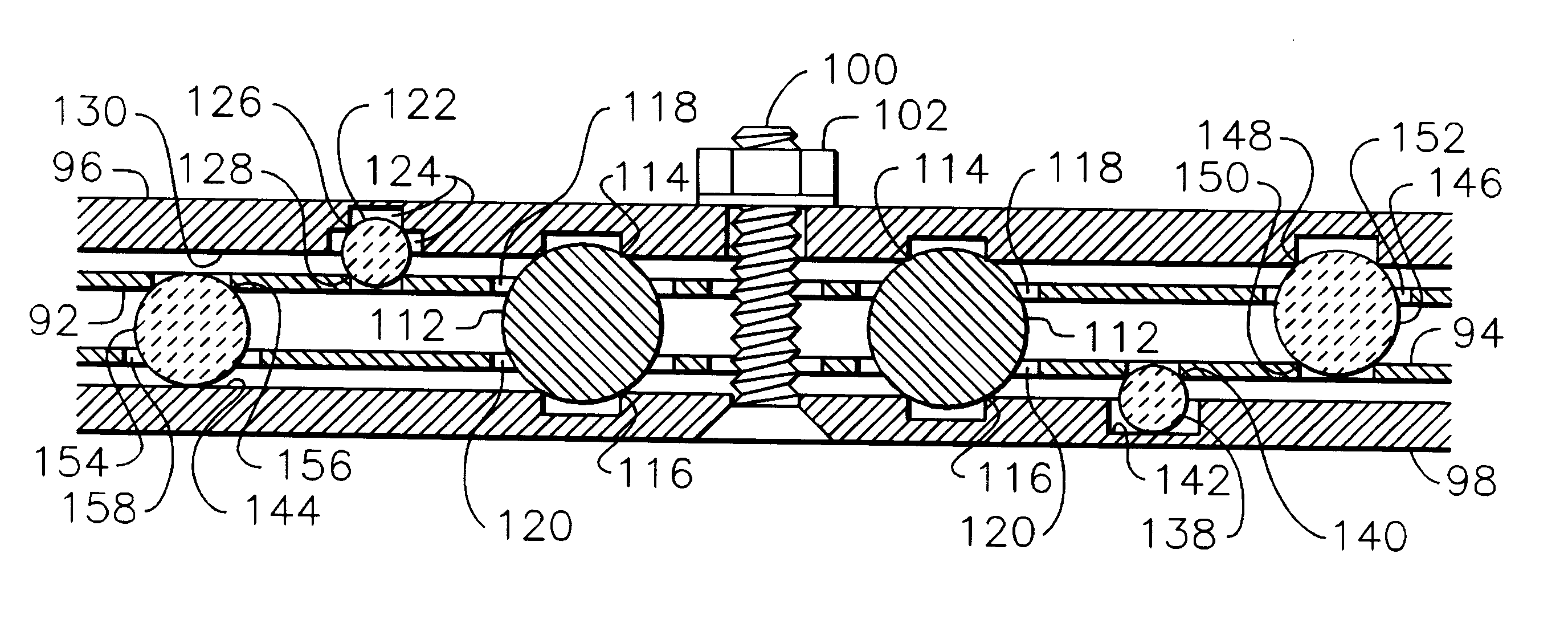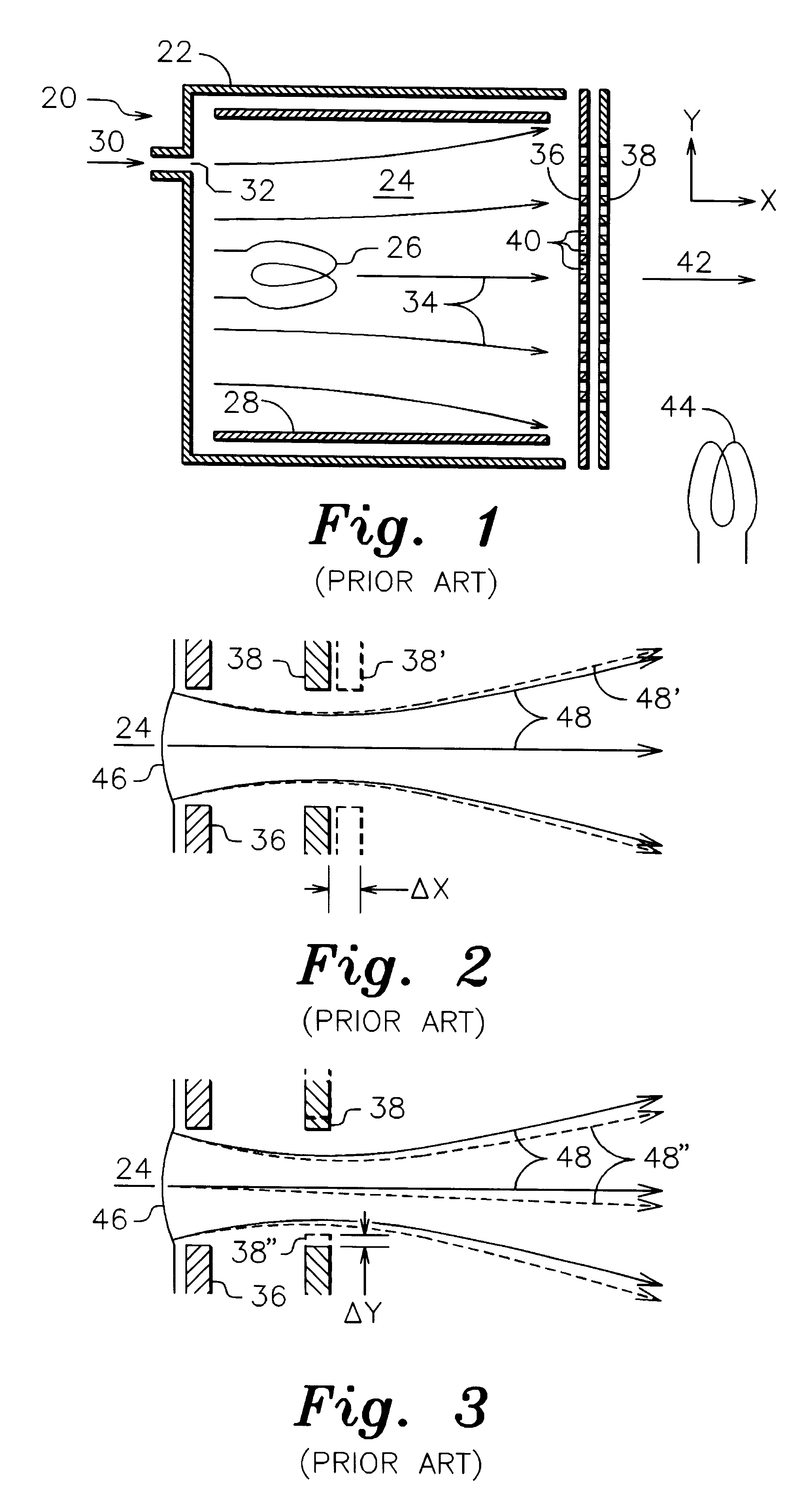Ion optics
- Summary
- Abstract
- Description
- Claims
- Application Information
AI Technical Summary
Benefits of technology
Problems solved by technology
Method used
Image
Examples
Embodiment Construction
Referring to FIG. 9, there is shown ion optics 90 constructed in accordance with a specific embodiment of the present invention. In FIG. 10 is shown an enlarged schematic cross-sectional view of the ion optics of FIG. 9 along section A--A therein. This view shows the apertured regions of grids 92 and 94 through which the ions are accelerated as well as the surrounding peripheral regions where the grids are supported and held in alignment. Ion optics 90 includes a first grid 92, a second grid 94, a first support member 96, a second support member 98 screws 100, and nuts 102. The screws and nuts hold the ion optics together. Grids 92 and 94 are separated from support members 96 and 98, both by spaces 104 and 106 and by clearance holes 108 and 110 for screws 100 in grids 92 and 94. This separation permits grids 92 and 94 to be electrically isolated from support members 96 and 98, as well as from each other.
FIG. 11 shows an enlarged schematic cross-sectional view of the ion optics of FI...
PUM
 Login to View More
Login to View More Abstract
Description
Claims
Application Information
 Login to View More
Login to View More - R&D
- Intellectual Property
- Life Sciences
- Materials
- Tech Scout
- Unparalleled Data Quality
- Higher Quality Content
- 60% Fewer Hallucinations
Browse by: Latest US Patents, China's latest patents, Technical Efficacy Thesaurus, Application Domain, Technology Topic, Popular Technical Reports.
© 2025 PatSnap. All rights reserved.Legal|Privacy policy|Modern Slavery Act Transparency Statement|Sitemap|About US| Contact US: help@patsnap.com



